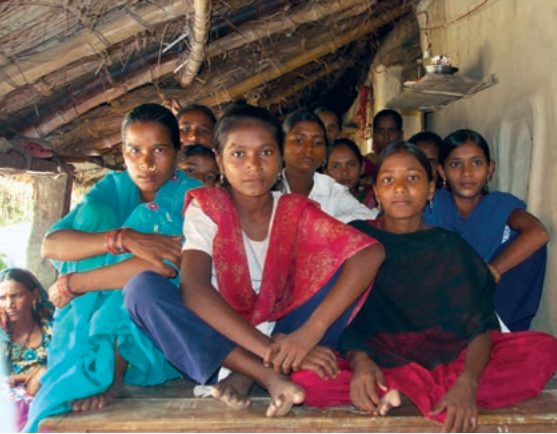Report Calls for Integrated Efforts to Reduce Teenage Pregnancy Worldwide
Teenage motherhood, especially for girls under 15 years old, has negative health and economic impacts for both the young girls and their communities.

Adolescent pregnancy rates remain far too high in developing countries, negatively affecting the health and future prospects of adolescent girls, according to a report released Wednesday by the United Nations Population Fund (UNFPA).
UNFPA’s State of World Population 2013 report, entitled Motherhood in Childhood: Facing the Challenge of Adolescent Pregnancy, contains new data and analysis on teen pregnancy and strategies to combat it.
According to the report, 19 percent of young women in the developing world become pregnant before age 18. That means 20,000 girls and young women under the age of 18 give birth every day, or 7.3 million in developing countries per year. Two million are girls under the age of 15, who are twice as likely to die in pregnancy than other women. They also face a much higher risk of poor health outcomes such as obstetric fistulae, tearing of the birth canal, vaginal, and rectal areas that can occur during childbirth leading to lifelong health problems and social ostracism.
Teenage childbearing also diminishes both personal and national economic prospects. If all the adolescent mothers in Kenya were able to obtain education and employment, for instance, the country’s gross income could increase by $3.4 billion a year.
“Pregnancy does not occur in a vacuum,” said Robert Blum, research adviser on the report and director of the Johns Hopkins Urban Health Institute, at a press event on the report, which emphasizes that too many pregnancy prevention strategies focus on young girls themselves, who in reality often have little control over their reproductive destiny.
Forced child marriage is rampant in the developing world, and 90 percent of adolescent mothers there are married. Negative attitudes about women and girls within families, peer groups, communities, and at the national policy level constrain women’s choices. Laws against child marriage often are not enforced, and young girls lack access to education and productive resources as well as contraception and accurate sex education.
Education is one of the best ways to delay pregnancy and improve young girls’ quality of life, according to the researchers. The report highlights a number of programs that have proven effective at keeping girls in school, such as direct cash transfer programs in Brazil, Bangladesh, and Mexico, which paid families for sending their daughters to school.
A “constellation” of solutions is needed, Blum said, focusing on education, social support, parental engagement, and health services.
Other international development efforts, such as environmental or clean water initiatives, cannot succeed without also addressing the reproductive health needs of this population of young girls, said Dianne Stewart, UNFPA director of information and external relations.
The presenters also pointed out that underage pregnancy is a significant problem in the United States, and that the causes—poverty and lack of education in rural areas—are similar to those in the developing world. The United States has the worst statistics on teen pregnancy in the developed world, with almost twice as many teen births as the United Kingdom, and ten times as many as Switzerland.
In the United States as in the developing world, Blum said, “Any barrier to family planning is a violation of youth rights.”
